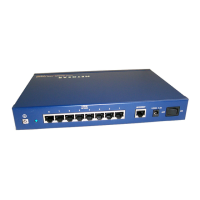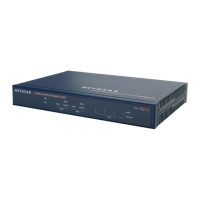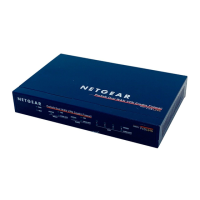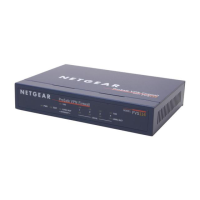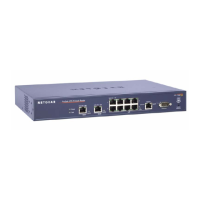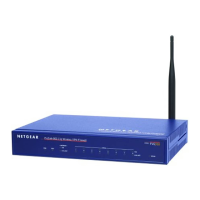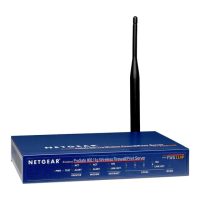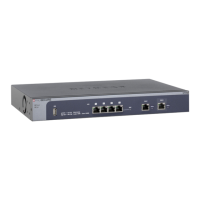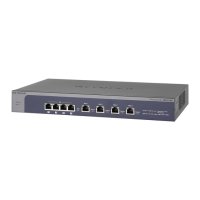Wireless Configuration and Security
91
ProSafe Wireless-N 8-Port Gigabit VPN Firewall FVS318N
Wireless Security Profiles
Security profiles let you configure unique security settings for each SSID on the wireless VPN
firewall. The wireless VPN firewall supports up to four security profiles (BSSIDs) that you can
configure from the Profiles screen (see Configure and Enable Wireless Security Profiles on
page 93).
To set up a security profile, specify a name for the profile and the SSID, type of security with
a
uthentication and data encryption, and whether or not the SSID is broadcast.
• Netwo
rk authentication
The wireless VPN firewall is set by default as
an open system with no authentication.
When you configure network authentication, bear in mind that older wireless adapters
might not support WPA or WPA2. Windows XP, Windows 2000 with Service Pack 3, and
Windows Vista do include the client software that supports WPA. However, client software
is required on the client. Consult the product documentation for your wireless adapter and
WPA or WPA2 client software for instructions on configuring WPA2 settings.
For information about the types of network authe
ntication that the wireless VPN firewall
supports, see Configure and Enable Wireless Security Profiles on p
age 93.
• Dat
a encryption
Select the data encryption that you want to use. The available options depend on the
n
etwork authentication setting described earlier (otherwise, the default is None). The data
encryption settings are explained in Configure and Enable Wireless Security Profiles on
page 93.
Some concepts and guidelines regarding the SSID are:
• A basic
service set (BSS) is a group of wireless devices and a single wireless access
point, all using the same security profile or service set identifier (BSSID). The actual
identifier in the BSSID is the MAC address of the wireless radio. (A wireless radio can
have multiple MAC addresses, one for each security profile.)
• An ext
ended service set (ESS) is a group of wireless devices, all using the same identifier
(ESSID).
• Dif
ferent devices within an ESS can use different channels. To reduce interference,
adjacent devices should use different channels.
• Roaming is the
ability of wireless devices to connect wirelessly when they physically
move from one BSS to another one within the same ESS. The wireless device
automatically changes to the wireless access point with the least interference or best
performance.
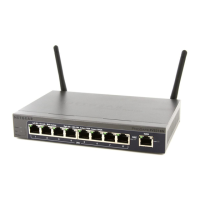
